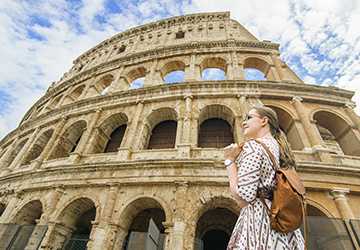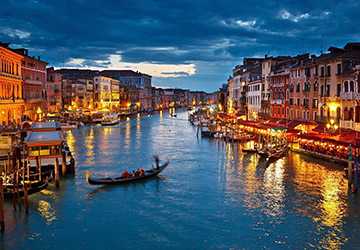5 Ancient Cities in Italy for History Enthusiasts
Ancient Italian cities attract history enthusiasts. With numerous options, choosing destinations can be challenging. Guidebooks and travel blogs offer overwhelming information.
Ancient Italian cities attract history enthusiasts. With numerous options, choosing destinations can be challenging. Guidebooks and travel blogs offer overwhelming information.
Many travellers focus on famous tourist attractions, missing out on more incredible experiences. They often leave feeling they've only scratched the surface.

This blog post presents five ancient Italian cities that excite history buffs. These destinations act as time machines, not just tourist attractions.
These Italian cities feature ancient architecture, from ruins to modern historic landmarks.
Let's begin!
But Why Explore Ancient Cities in Italy?
Have you ever considered what being a Roman would be like? Italy's old cities allow you to do precisely this. They are not only locations – they are eras. These cities create narratives that cannot be written in books.
Feel the cold surface of a wall that has existed for thousands of years. Stroll in the Roman Forum and tour the city that Julius Caesar once traversed. This is not just history you can read about, but history you can touch and even interact with, to a certain extent.
Italian ancient cities are beautiful and famous for their marvellous structures. From large columns to small mosaics, they are eye candies indeed. They explain the intentions of the old constructors and sculptors.
Well, these places created our world. They initiated concepts and innovations that continue to be used today. The two are significant because exploring them assists in learning about one's ancestry.
5 Ancient Cities in Italy for History Enthusiasts
These five cities aren't just tourist attractions; they hold them as gateways to the past. These cities are not just about sightseeing but about living history.
1. Rome: The Eternal City
Rome today functions as an open-air museum. Its streets evoke memories of emperors and gladiators. The city showcases Roman engineering, entertainment, and impressive architecture.
The Roman Forum reveals tales of the Empire's political intrigue and daily life. Rome's landmarks offer glimpses into the grandeur and theatricality of ancient Roman civilization.
Please only leave the capital after visiting the Pantheon with its ancient dome. To get the most out of the experience, it is recommended that you begin early in the morning.
It is pretty early in the morning, and the sun will paint the ruins in golden colours while you will be the first on the scene.
It would help if you considered going on guided tours. Local guides make the stones more interesting by telling stories unknown to ordinary tourists. Their observations bring life to the ruins and help one visualize the events in those structures.
2. Pompeii: A City Frozen in Time
Pompeii is an excellent example of an open window to the past. This Roman city was buried in ash following the eruption of Mount Vesuvius in 79 AD, which preserved many aspects of Roman life.
See the streets on which Romans used to walk. Visit families' houses with frescoes painted on the walls, which have remained the same. The public baths and temples show the characteristics of the people's social life in the city.
Carry comfortable shoes—there are so many areas that you will need to walk on, especially rough and rocky ones. Pack water and a hat because there can be very little shade.
It is recommended that you take a guide if you want to grasp the meaning of what is being offered to you.
3. Florence: Birthplace of the Renaissance
Florence is positively teeming with works of art. The birthplace of Michelangelo, Leonardo, and Botticelli still throbs with art and culture.
Of course, the Uffizi Gallery is a must-see. It contains masterpieces that defined the direction of art in human history. It is advisable to book tickets in advance to minimize the time spent waiting for your turn.
By any means, take advantage of the Florence Cathedral. Renaissance engineers created an enormous dome that rises above all other construction and defines the city's skyline. Ascend to the tippy top to get the city's best vantage point.
Stroll through the narrow streets of the historical part of the city. You will find yourself in front of small churches with stunning paintings on the walls and small local artisans' studios.
4. Venice: The Floating City
Venice emerges from the lagoon, making it appear like a dream city. Its canals and bridges make it a beauty and history puzzle. Venice was a once prominent maritime republic, with its influence going beyond the waters that it cruised.
Among the attractions that represent Venice's history are St. Mark's Basilica and the Doge's Palace. However, Venice's most incredible beauty is when you wander through the city's narrow streets.

If this is too busy for your taste, you should explore other islands outside the significant ones. Murano is well known for its glass-making tradition. The buildings in Burano are painted in different colours, which makes them ideal for photographers.
Go for a Vaporetto ride at sunset. The sunlight on the Grand Canal is so beautiful that it seems almost magical.
5. Verona: Where History Meets Romance
Verona is one of the most beautiful cities in Italy. It combines the spirit of ancient Rome and the Middle Ages. Its ancient Roman amphitheatre, the Arena di Verona, still hosts operatic performances.
Shakespeare placed Verona on the literary map through his play 'Romeo and Juliet'; Juliet's House is where the famed balcony is. Yes, it is very touristy, but there seems to be something special in the air.
Indeed, it would help if you visited the Castelvecchio, which is now a museum since it was a fortress. It also contains a fine art gallery and marvellous views of the Adige River.
Walk in one of Verona's most beautiful spots: the Piazza delle Erbe. This open-air marketplace has painted buildings and historic landmarks nearby.
Plan Your Historical Journey in Italy
Prepare for a rich historical experience in Italy. Start planning your adventure now.
These cities eagerly await the sharing of their stories. Walk where gladiators battled and on centuries-old roads.
Pre-book tours to avoid long lines and get insider tips on photo spots. Book accommodations near historical sites.
Remember, every stone and column tells a story. Your time travel experience is just a few clicks away.
Italian cities, among the world's oldest, invite you to answer their call, become a history explorer, and bring the past to life!
Frequently Asked Questions
Q. What's the best time to visit Rome?
Ans: April, May, September, and October are perfect for sightseeing, though one might melt during the former and get lost in hordes of tourists during the latter.
Q. How can I reach Pompeii from Naples?
Ans: Take the Circumvesuviana train from Naples to Pompeii. It is fast, efficient, and affordable. Services are available every half an hour, and the trip takes approximately 40 minutes.
Q. Are guided tours available in Florence?
Ans: Florence is your heaven! There are guided walks for all kinds of people and their interests. Gardens, galleries, ancient ruins, good food – anyone can find something to do.
Q. Can I visit Venice's canals by boat?
Ans: Absolutely! Any tourist should notice boat riding in the canals of Venice. Gondolas are a great way to get that authentic Italian feel, but they are costly.